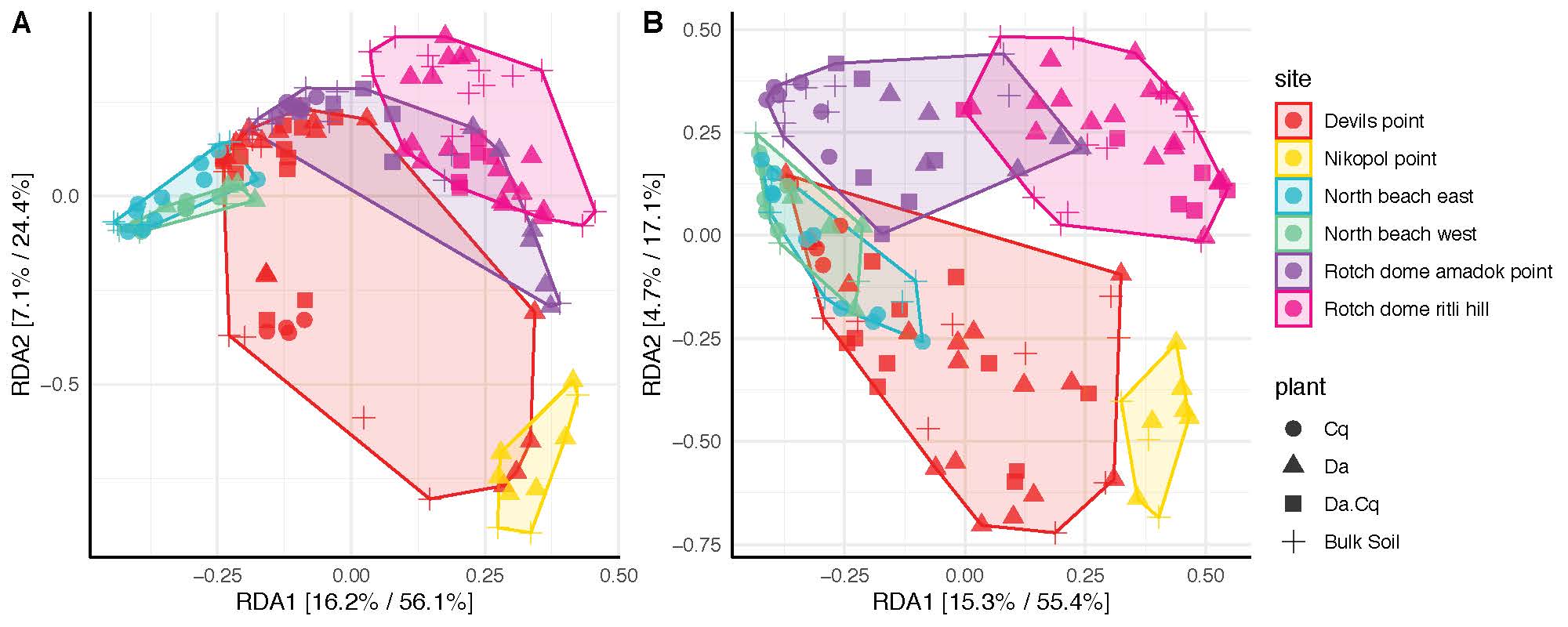Antarctica is the highest, driest, and coldest continent on Earth. Its characteristics make it inhospitable to most multicellular life forms, however, microbes are present in every niche, from underwater lakes to the roots of the two native vascular plants in Antarctica, Deschampsia antarctica and Colobanthus quitensis. In this area of research, we are currently working on two interrelated projects.
Origin of Antarctic rhizosphere. In the first project, we want to understand what’s the origin of the rhizosphere of these two plant species, what are the genetic functions they encode, and whether they provide any services to the plants. For this, we use an ASPA site, Byers Peninsula, located at the Western tip of Livingston Island (South Shetlands), Antarctica, as a model. Here, we have taken samples from four sites that encompass a variety of conditions such as both plants occurring together or alone, nearby the coast, close to a glacier, etc. We are using amplicon and shotgun sequencing to characterize the composition and structure of these communities, as well as temporal stability. We are also focusing our efforts on isolating the most abundant microbes of the rhizosphere to create synthetic communities in the lab and test hypothesis in an experimental setting.
We know that sampling site, and to some extent proximity among sites, play a role in microbial community composition and structure. Preliminary results also suggest that the rhizosphere is acquired horizontally from the soil, in a somewhat specific manner.

Bacterial and fungal beta diversity for Deschampsia antarctica (Da), Colobanthus quitensis (Cq), and their association (Da.Cq).
Long-range transport of pollutants and microbes. The second project is a collaborative endeavor involving researchers from various universities in Chile including Universidad de Chile, Universidad de Talca, and P. Universidad Católica. The project, termed POLARIX, will study teleconexions between Antarctica and the rest of the world, using Persistent Organic Pollutants and microbes as models.
 Check out our latest news at @polarix11 on Twitter, our YouTube channel, and on www.polarix.org
Check out our latest news at @polarix11 on Twitter, our YouTube channel, and on www.polarix.org
We will address questions related to: rates of transport and deposition of organic pollutants and microbes to Antarctica, phylogenetic relationships of microbes collected from air and soil, functional traits of microbes and their genetic determinants, response of airborne and soil microbes to pollutants, global origin of airborne microbes and pollutants, colonization of airborne microbes on land and rhizosphere plants, the potential role of soil as a sink-secondary source of microbes and pollutants in Antarctica under a scenario of climate change, and their impact on plant physiology and soil/rhizosphere composition and function.

Basic diagram depicting long-range transport of microbes and pollutants, and their potential effect on Antarctic vascular plants.
More on the project’s objectives and scope on national TV (in Spanish)
